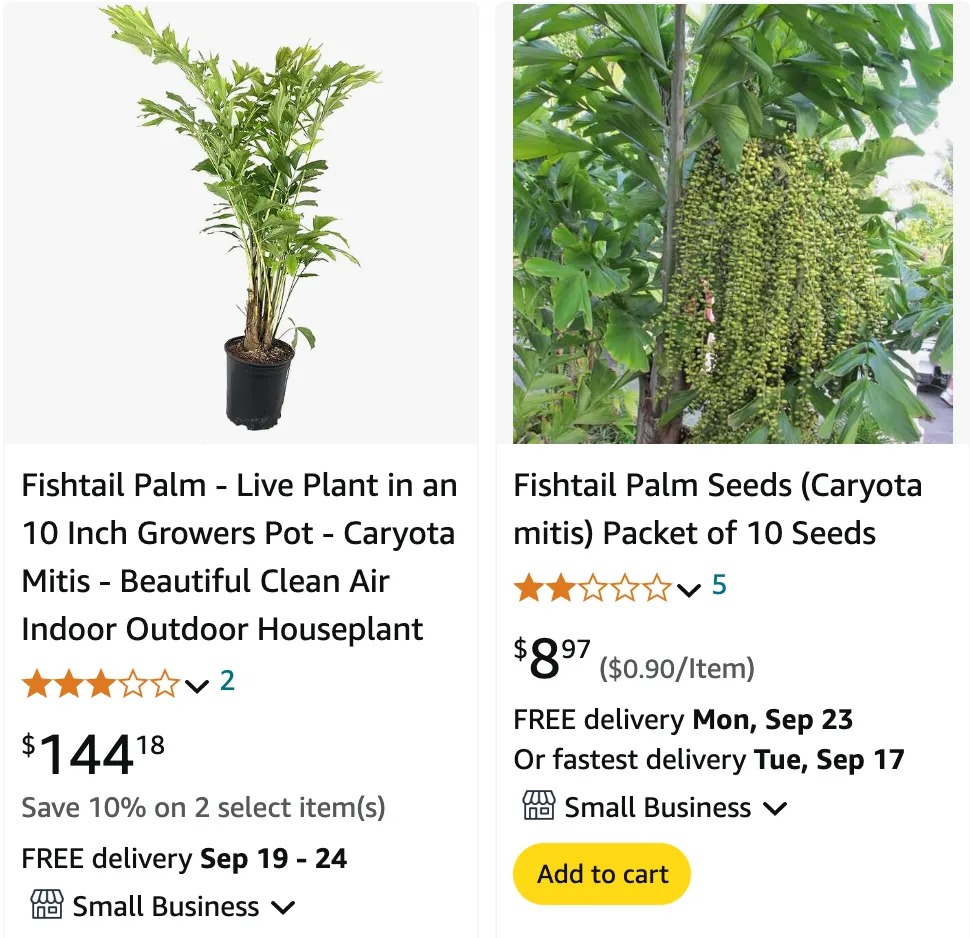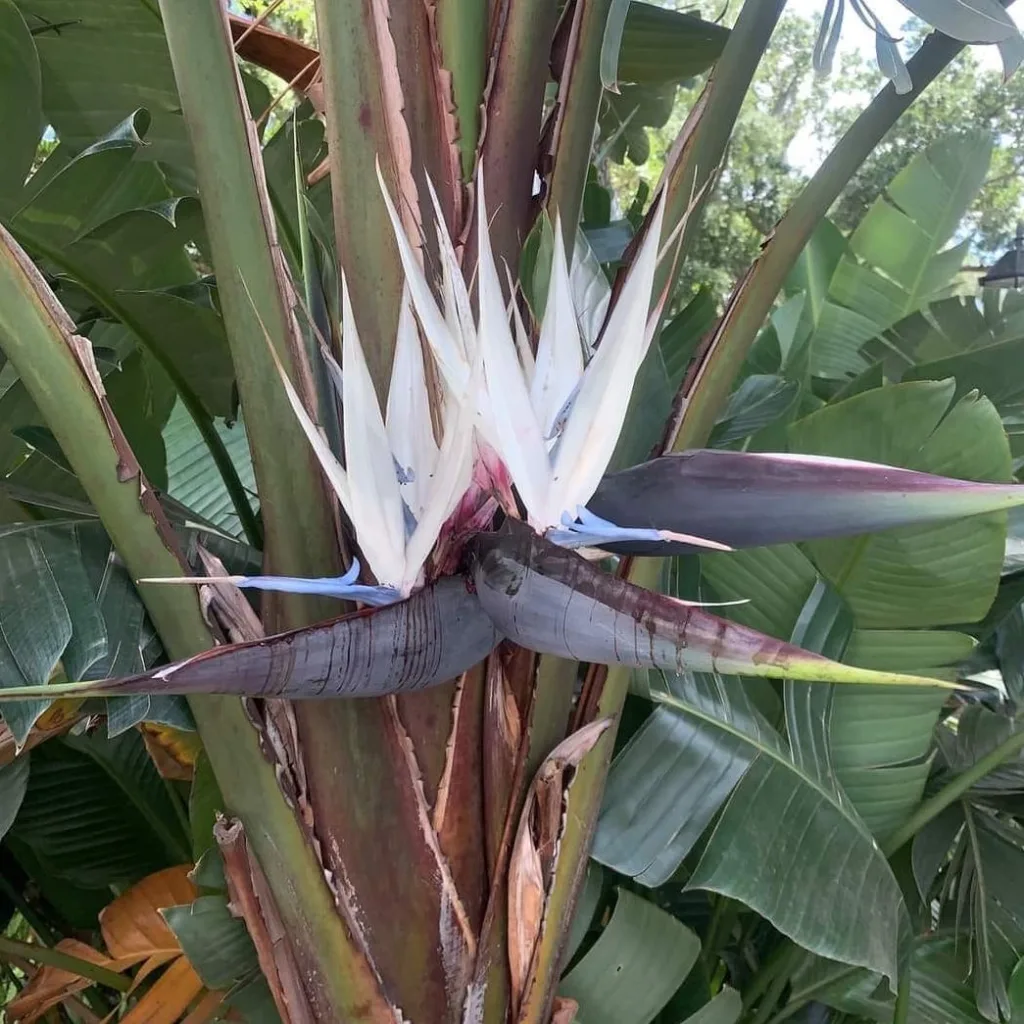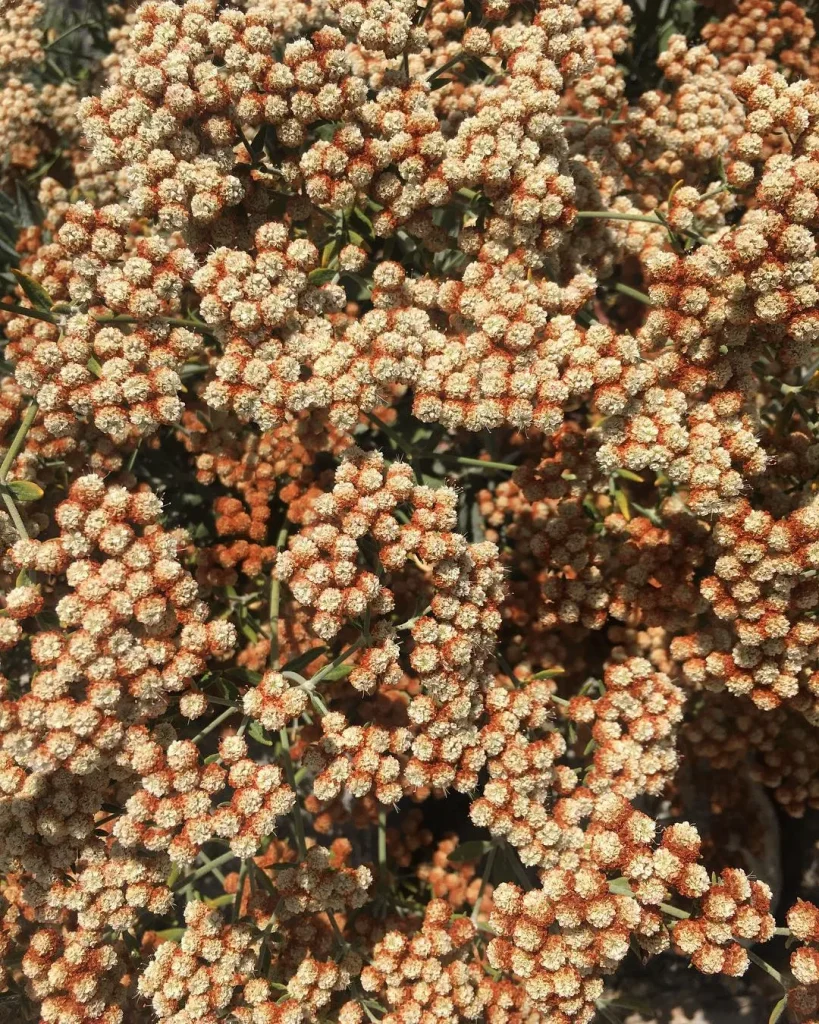
What is Caryota Mitis?
Caryota Mitis, often known as the Fishtail Palm, belong to the Arecaceae family, is a tropical palm native to Southeast Asia. Its name comes from the unique shape of its leaves, which resemble a fish’s tail. This palm is known for its feathery, pinnate foliage and can grow up to 6-10 feet tall in indoor settings, while it can reach even greater heights in its native habitat. It’s a popular choice for indoor and outdoor gardens due to its striking appearance and relatively easy care.
Plant Family: 184 Genera in Arecaceae
How to Care for Caryota Mitis?
Caring for Caryota Mitis is quite manageable if you follow a few key guidelines:
- Light: This palm thrives in bright, indirect light. While it can tolerate some direct sunlight, especially in the morning, too much direct sun can scorch its leaves. In low light conditions, its growth will slow down, and it may not reach its full potential.
- Watering: Caryota Mitis prefers consistently moist soil. Water the plant regularly but make sure the pot has good drainage to avoid waterlogging. Let the top inch of soil dry out between waterings. During the winter months, reduce watering as the plant’s growth slows.
- Humidity: This palm loves high humidity. Regular misting or placing the pot on a tray of pebbles and water can help maintain the right moisture levels. In dry indoor environments, a humidifier can be beneficial.
- Temperature: It enjoys warm temperatures between 65°F and 80°F (18°C to 27°C). Keep it away from drafts and sudden temperature changes, which can stress the plant.
- Soil: Use a well-draining potting mix. A combination of peat, pine bark, and perlite works well. Ensure that the pot has adequate drainage holes to prevent water from accumulating at the bottom.
How to Propagate Caryota Mitis?
Propagation of Caryota Mitis can be a bit tricky as it primarily spreads through seeds. Here’s a step-by-step guide:
- Seeds: Obtain fresh seeds from a reputable source. Soak the seeds in warm water for 24 hours to help with germination.
- Sowing: Plant the seeds in a pot filled with a moist, well-draining potting mix. Cover the seeds lightly with soil.
- Conditions: Keep the pot in a warm, humid environment with temperatures around 75°F to 80°F (24°C to 27°C). A humidity dome or plastic cover can help maintain moisture.
- Care: Germination can take several weeks to months. Keep the soil consistently moist but not soggy. Once the seedlings are large enough to handle, transplant them into larger pots.
What to Plant With Caryota Mitis?
Caryota Mitis pairs well with a variety of other plants. Consider these companions:
- Fern Varieties: Boston ferns or Bird’s Nest ferns complement the palm’s tropical look and thrive in similar conditions.
- Philodendrons: Their large, lush leaves can create a lush, green environment.
- Orchids: Their delicate blooms add a touch of elegance without competing with the palm’s bold foliage.
Is Caryota Mitis Toxic?
Caryota Mitis is not known to be toxic to humans or pets. However, it’s always wise to keep any plant out of reach of pets who might chew on leaves, as some non-toxic plants can still cause mild digestive upset.
Benefits of Caryota Mitis
Having a Caryota Mitis in your space offers several benefits:
- Aesthetic Appeal: Its unique leaf shape and lush greenery add a touch of the tropics to any indoor or outdoor setting.
- Air Purification: Like many indoor plants, it can help purify the air by removing toxins and increasing humidity.
- Low Maintenance: Once established, it requires minimal care, making it ideal for busy or novice plant owners.
Common Problems with Caryota Mitis
Here are some common issues you might encounter:
- Yellowing Leaves: This can be a sign of overwatering or poor drainage. Ensure the pot has good drainage and adjust watering habits.
- Brown Leaf Tips: Often caused by low humidity or underwatering. Increase humidity and adjust your watering routine.
- Pests: Watch out for spider mites or scale insects. Regularly inspect your plant and treat infestations with insecticidal soap if necessary.
Caryota Mitis vs. Other Similar Palms
Comparing Caryota Mitis with similar palms like the Areca Palm and the Kentia Palm:
- Areca Palm: While both are great indoor plants, the Areca Palm has more feathery, light green fronds and is a bit more tolerant of low light compared to Caryota Mitis.
- Kentia Palm: Kentia Palms are more tolerant of varying light conditions and have a more upright growth habit compared to the spreading, bushier Caryota Mitis.
In summary, Caryota Mitis is a beautiful and relatively easy-to-care-for palm that adds a unique touch to any plant collection. With the right care and conditions, it can thrive and bring a bit of tropical charm to your space.
If i die, water my plants!



